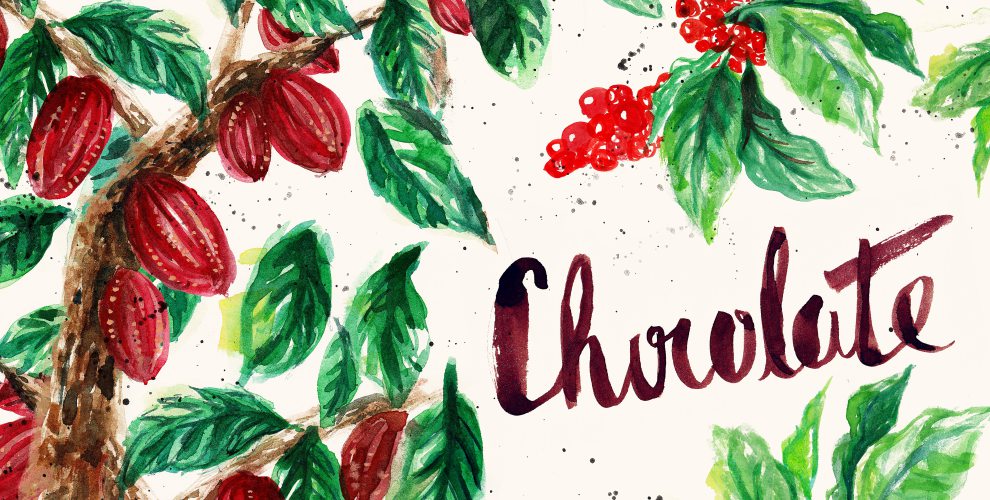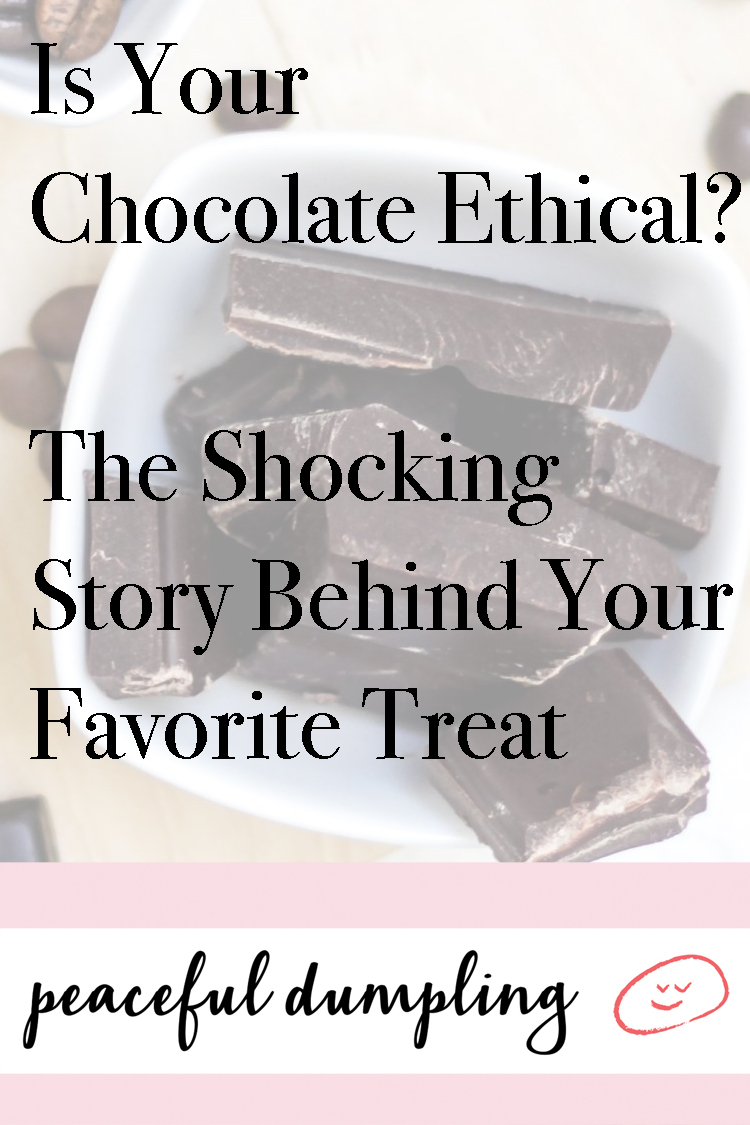A version of this article was originally published on Ethical Unicorn.
Well, everyone, we have passed the quarter point of Lent (10 days), and I’m actually doing ok having given up chocolate. I thought I’d be really struggling and absolutely desperate for a bit of cocoa by now, but I’m doing surprisingly alright (and to clarify, I’m still not eating it on Sundays even though I’m technically allowed to). That being said, I have another 30 days to go, so we’ll see how that goes on the old mental front, but writing this article has again reminded me of how important our purchasing choices are when it comes to food.
This article is dedicated to delving into the world of chocolate ethics. I’m participating in International Justice Mission’s Lent Campaign, which highlights slavery in supply chains, and this article is the second in a series, with the first focusing on coffee.

Quick Chocolate Basics
- There 5 to 6 million cocoa farmers worldwide
- 40 to 50 million people depend on cocoa for their livelihood
- The current global market value of annual crop is 5.1 billion dollars
- The world’s biggest chocolate makers – Hershey, Nestle, and Mars – account for more than 35% of global chocolate production
- 70% of cocoa comes from West Africa
- Supply chains between African farmers and western manufacturers are long and complex, including plantation owners, chocolate dealers, African government officials, and cocoa suppliers
- Up to 2.1 million children are at risk for falling under the Worst Forms of Child Labour conditions set by the UN (ILO 182)
- Children are being trafficked in every day to work on cocoa farms as slaves. The average cost for a child is $250
- A 2010 documentary called The Dark Side of Chocolate exposed supply chains and the major chocolate companies’ deliberate ignorance. Filmmakers who repeatedly tried to force the truth on them were met with refusal and physical removal from company premises
(SlaveFreeChocolate.org, FoodIsPower.org, & Fortune.com)
The Facts
In a documentary that aired on the BBC, filmmakers interviewed young boys in Ivory Coast who said they’d been beaten and forced to work long hours without pay. One who said he’d been working on a cocoa farm for five years was asked what he thought about people enjoying chocolate in other parts of the world. “They are enjoying something that I suffered to make,” the boy answered. “They are eating my flesh.” (Fortune.com)
Over 70% of the world’s cocoa beans come from West Africa, and the economies of West African governments rely heavily on the export of cocoa. There are nearly 2 million cocoa-growing households in Ivory Coast and Ghana, and the majority of cocoa produced worldwide is grown by small holders, with the average farm size in these countries sitting at less than 10 acres. Cocoa grown in the Ivory Coast makes up 43% of the total world crop and 60% of the country’s export revenue, while nearly 40% of the population is involved in cocoa farming. Poverty, debt, overseas competition and supply chain middlemen have all played a part in driving cocoa farmers to take desperate measures, as desperation drives them to seek cheap labor, which has resulted in huge amounts of slavery in the cocoa supply chain.
Approximately 2.1 million children in the Ivory Coast and Ghana may be exposed to the worst child labor conditions on cocoa farms. Many of these children are slaves as they are trafficked to farms, unable to leave, and forced to work without pay. As the chocolate industry has grown over the years, so has the demand for cheap cocoa. On average, cocoa farmers earn less than $2 per day. As a result, they often resort to child labor. Many children in Western Africa live in poverty, so begin working at a young age to support their families. Some children end up on cocoa farms because traffickers tell them that the job pays well, whilst others are sold to traffickers or farm owners by their relatives who, unaware of the danger and exploitation, believe that they will find honest work and send some of their earnings home. Traffickers also abduct young children from small villages in neighboring countries. It’s reported that at least 12,000 child cocoa workers have been trafficked from neighboring nations like Mali, Burkina Faso, and Togo. Many of these children will never see their families again.
Most of the children working on cocoa farms are 12 – 16, but reporters have found children as young as 5. Children typically work 80 to 100 hours per week, working from 6am until the evening on tasks such as using chainsaws to clear forests, climbing cocoa trees to cut bean pods using a machete, packing the pods into sacks weighing over 100 pounds when full and dragging them through the forest, and striking pods with machetes to open them and retrieve the cocoa beans (they hold the pods in their hands while doing this, leading to most children being regularly cut by machetes). Children in these farms are also exposed to a lot of agricultural chemicals on cocoa farms, as farms in western Africa often deal with insects by spraying the pods with industrial chemicals. In Ghana, children as young as 10 spray the pods with these chemicals without any protective clothing. Farm owners using child labor usually provide the children with the cheapest food available, and in some cases, the children sleep on wooden planks in small windowless buildings with no access to clean water or sanitary bathrooms. 10% of child laborers in Ghana and 40% in the Ivory Coast also don’t attend school, and they are often whipped and beaten for working too slow or trying to escape. The farms of Western Africa supply cocoa to the international giants such as Hershey’s, Mars, and Nestlé, showing how these corporations are directly connected to the worst forms of child labor and slavery (FoodIsPower).
The industry has also become increasingly secretive, making it difficult for reporters to both access farms where exploitation happens, but also to get this information to the public. In 2004 a journalist was allegedly kidnapped and killed whilst reporting on government corruption in the Ivory Coast’s cocoa industry. In 2010, three journalists were detained after they published an article on government corruption in the cocoa industry in the Ivory Coast (FoodIsPower). At the same time, large players in the chocolate industry are also very keen to abdicate themselves from any sort of responsibility:
Chocolate manufacturers claim that they were not aware of the human issues of cocoa production until the late 1990’s. Representatives from major chocolate companies have personally told Slave Free Chocolate that the problem does not exist. Others acknowledge that it does exist, but that it is not their problem and respond in irritated disgust that the issue just intrudes into their business.
Surprisingly, some professional chefs and pastry chefs also deny responsibility. Sometimes they’re loyal to a supplier, or attached to low prices. And it’s easy to look the other way (SlaveFreeChocolate).
If that wasn’t enough, big chocolate corporations also play a large hand in deforestation, encouraging farmers to clear West African rainforests to grow more cocoa plants, as well as destroying the Indonesian and Malaysian rainforests for palm oil plantations.

The Legal Side
“If you are talking to the chocolate company,” one of the elders says, “tell them we are suffering here.” (Fortune)
In 2001, after prolific reports of child labor in the chocolate industry, the US House of Representatives voted to consider a labelling system to assure consumers that slave labour was not used in the production of their chocolate, requiring chocolate companies to show that they were “child labour free” and label their products this way. The US chocolate industry responded with an intense lobbying to prevent this, arguing that they were not responsible for the slavery in Africa because they have no control over the cocoa farms. In November 2001 the US chocolate industry finally released a severely watered down protocol and joint statement outlining their plans to work toward eliminating child and forced labor in cocoa farms, particularly West Africa, this was known as the Harkin-Engel Protocol. Unfortunately, this protocol made certification voluntary, and the labeling of products was essentially abandoned. Over 15 years later it seems the protocol has achieved almost nothing. Interesting isn’t it, how the chocolate corporations had a lot of money to funnel into lobbying when they could have directed those funds to fixing the problems.
There are also international laws; the UN Convention on Children’s Rights contains a protocol addressing child slavery and child labor, and in recent years the Ivory Coast passed legislation to make trafficking illegal, but this has not stopped the problem.
People I spoke with in law enforcement in the country say that the government’s intentions haven’t yet translated into widespread education for prosecutors and police on how to recognize it or what to do about it. The U.S. Department of Labor’s 2014 report on the worst forms of child labor in Ivory Coast found that the national police’s anti-human-trafficking unit had an operating budget of just $7,700, which it called “insufficient.”’(Fortune)

The Payment Problem
At the time the Harkin-Engel Protocol was signed in America, cocoa prices were at their lowest. Since 1955 The Ivory Coast’s government-run board had been protecting the country’s farmers by setting a minimum price at which they’d export their product, but this government-regulated industry was privatized in 1999. At the same time, chocolate manufacturers around the world encouraged more and more developing nations to grow cocoa, thus driving down the overall price. These factors led to a fall in cocoa prices and huge increases in rural poverty in West Africa, which meant that child labor increased. Farmers working in isolation on family farms, with no concept of the global market, were left to fend for themselves. Now producers regularly only get half the world price, as they have been left to rely on exploitative middlemen to sell their crop. Even as cocoa prices have increased these small farmers can’t see the benefits, as they lack access to transportation and shipping, and aren’t able to negotiate on their own behalf on the open market. Farmers are also dealing with large debts due to when prices were below production costs. Low payments and large debts lead to increased slavery, as farmers can’t afford to operate ethically. Many groups insist that minimum pricing is necessary to ensure a steady income and enable farmers to make changes. While some companies choose not to buy from West Africa at all, believing that any cocoa from that part of the world may involve exploitation, this also doesn’t solve the problem, instead driving prices even lower.
Essentially, when large corporations refuse to pay a fair amount for cocoa beans, or when long exploitative supply chains take profit away from the actual farmers, slavery is perpetuated. Traffickers take advantage of farmers who are already in desperate financial need, and children are sold into child labor.
__
If this all seems a little overwhelming, you’re in good company. No one wants to support a cruel industry. Fortunately, there are several chocolate suppliers who are passionate about creating ethical chocolate products–at all stages of the production process–which means providing fair wages and humane working conditions to cocoa farmers. These companies are Fair Trade Certified, so look for the Fair Trade certification on the label. See more tips at Ethical Unicorn.

Also by Francesca: This One Thing Could End Period Poverty *And* Make Periods More Sustainable
More Than Eco-Friendly: Why Sustainable Style Is A Win For Body Positivity
Related: Truth: You Don’t Have To Be Rich To Do Ethical Shopping. 7 Genius Ways I Save Money
Get more like this—Subscribe to our daily inspirational newsletter for exclusive content!
__
Photos: Unsplash; Illustration: Kadlec Studio
